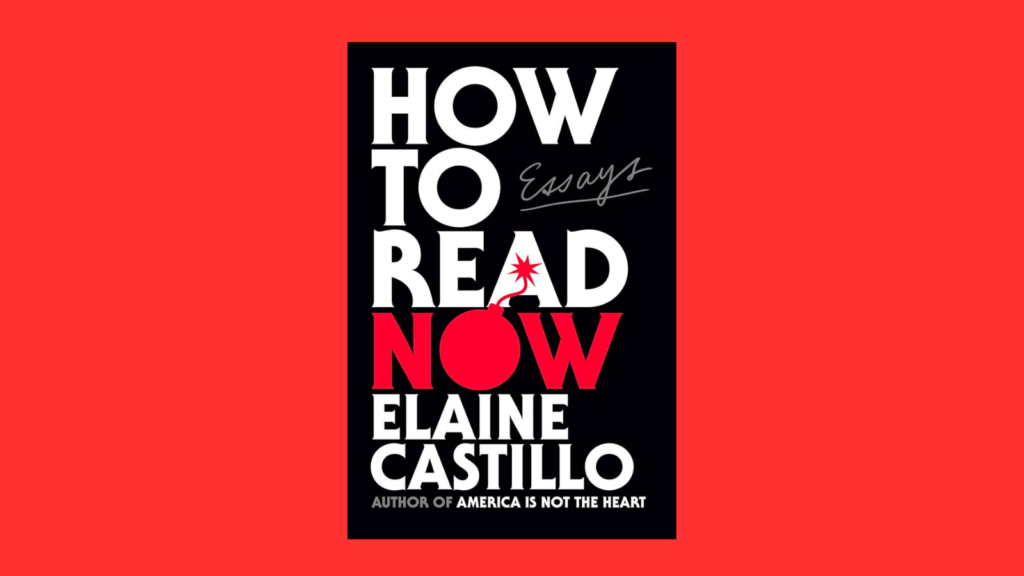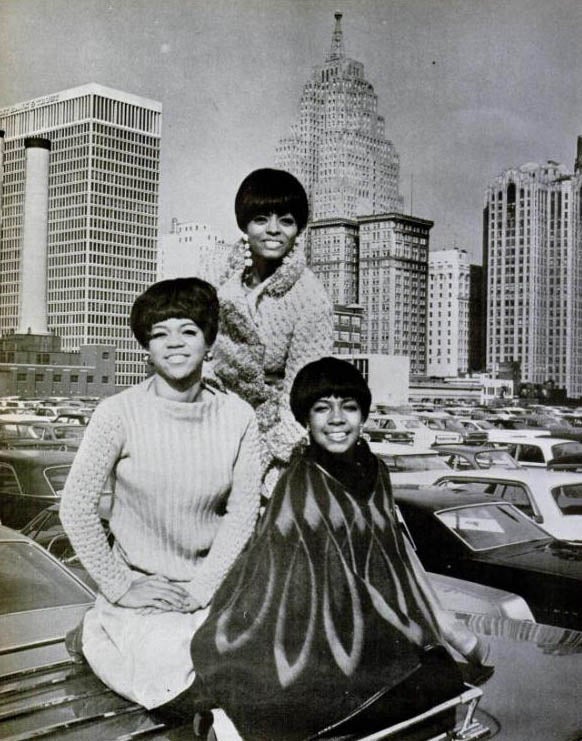Before the stage at Pittsburgh’s City of Asylum, I scribbled notes while Elaine Castillo crossed her legs and shared excerpts from her latest essay collection, How to Read Now. Under the soft spotlights, her critical reflections and sharp sarcasm captivated the audience. I found myself humming and nodding in agreement as Castillo deftly articulated many thoughts that had been occupying my mind.
On the ride home, I opened the hardcover book—and dug right in.
In her preface, the California-born writer clarifies the meaning behind the book’s title: How to Read Now rolls off the tongue more smoothly than a title such as How to Dismantle Your Entire Critical Apparatus.” And indeed, the book challenges its readers to do precisely that.
A daughter of Filipino immigrants and a fervent proponent of decolonial art and storytelling, Castillo’s mission is reflected in how she chooses to pronounce of her own last name. As she shares in the book, her family pronounces the name as Cast-EEL-yo, diverging from the Spanish colonizers’ Cast-EE-yo—a fact she lovingly describes as an act of “decolonial re-membering.”
In 2021, two books caused ripples in the literary world: Matthew Salesses’ Craft in the Real World and The Anti-Racist Writing Workshop by Felicia Rose Chavez. These How-To guides advocated for decolonizing writing workshops, particularly within American MFA programs, by decentering the white gaze and debunking the myth of a universal standard for craft and audience.
Castillo’s How to Read Now takes the battle to a broader front. While continuing to address her own MFA experiences and scrutinizing the predominance of white perspectives in workshop settings, Castillo explores the concept of decolonial reading in its most expansive form. She goes beyond the realms of text production and consumption to include movies, shows, monuments, society—and the world at large.
With a surgeon’s precision, Castillo dissects our consumption of the world through literature and media. She guides us on a journey of reckoning with the ways we interpret our surroundings and, as a result, how we situate ourselves within them.
However, Castillo does not seek to educate the reader in the traditional sense. On the contrary, she argues that the problem with our reading habits does not stem from ignorance. She rather suggests that “most people are vastly overeducated: overeducated in white supremacy, in patriarchy, in heteronormativity.”
One of the central concepts Castillo introduces in her collection is the distinction between the Expected Reader and the Unexpected Reader. She describes the expected reader as the presumed audience, a reader who is used to being accommodated through translations, italics, and footnotes, and who becomes unsettled when the text does not conform to their expectations. As Castillo emphasizes, these readers are often white and male.
On the other hand, the unexpected reader grows on the margins, engaging with art not crafted with them in mind. They glimpse into the lives of characters who do not reflect their cultural backgrounds or cater to their preexisting reservoirs of knowledge. These readers labor to connect with the material at hand, savoring a meal prepared to delight someone else’s taste buds.
This distinction lays a foundational basis for the book’s main theme, prompting questions about who does the production, who does the consumption, and who’s being consumed. Driven by this concept, Castillo explores how a colonial hegemony dictates our interpretation of art and the world. She illustrates how writers of color, even when granted entry into literary and art circles, are expected to conform to specific roles and occupy a pre-defined niche she refers to as “the heart-porn of the ethnographic.” Castillo demonstrates how the literary world’s superficial efforts to “decenter” colonial narratives actually reinforce the prominence of white writers’ work. This dynamic pushes the marginalized writer to become a “Professional Person of Color,” ultimately placing them on a platform that tokenizes rather than empowers.
In Black Skin, White Masks, Frantz Fanon delves into the revolutionary concepts concerning the relationships between colonizers and the colonized, highlighting how the colonized sometimes internalize a sense of inferiority, striving to assimilate into the culture and language of the white colonizers. This behavior takes place, in Fanon’s opinion, because “A man who has a language consequently possesses the world expressed and implied by that language.”
Those Fanonian echoes underlie many of the arguments Castillo raises about decolonial reading, as when she critiques the notion that “…when our stories enter the mainstream, we must send the brightest of us, be on our best behavior, the way our parents turned on their “white people voice” when talking to teachers and taxman alike[.]”
In eight long-form critical essays, Castillo exemplifies her approach by deconstructing the literary contributions of Joan Didion, analyzing Peter Handke’s Across or Der Chinese des Schmerzes, and examining the contemporary discussions surrounding race in Jane Austen’s works. She asserts, “Being capable of engaging with both Austen’s work and the historical realities of its time period is not a mutually exclusive exercise, but a mutually formative one, the very stuff of being a reader in the first place.”
In “Honor the Treaty,” Castillo confronts the argument that demolishing monuments of slaveholders equates to erasing history. After thorough analysis, she concludes: “Those statues don’t just teach us about our past—they teach us how to read our past, and thereby how to live in our present.” Which leads her to believe that “To challenge these monuments—to question the old story they’ve had so long to tell—is not only a vital act of disobedience. It’s a revolutionary act of reading.”
Continuing with the book’s central theme, Castillo critiques the superficial nature of “Representation Matters Art.” She explains how the inclusion of artists of color often arises not from a sincere interest in their humanity but as a tokenistic gesture to appease the white conscience. “Representation Matters Art believes we can salvage the settler colonial Western fantasy by simply casting John Wayne as Filipino this time.”
Online criticism of the book has sometimes focused on what they perceived as the vilification of white writers, misconstruing Castillo’s critique as a call to boycott white authors altogether. Castillo preemptively addresses this misconception in her book, explaining how what preoccupied her mind is not what, but rather how, we read: “We read them like they were just books, and they had things to say, and they were sometimes very powerful and fragile and beautiful; just like I was a person, and I had things to say, and I was sometimes very powerful and fragile and beautiful.”
Throughout the essays, Castillo employs a penetrating voice that delivers provocative statements, infused with a snarkiness that snaps like a whip. Simultaneously, she wraps her critiques in arresting prose. The book’s language mirrors the essential characteristic of its content: a blend of challenge and tenderness.
On the other hand, I found myself pausing over the book’s prevalent US-centrism—and for a reason. At the outset, Castillo hints at transcending the US-centric perspective, yet, in my view, she does not fully escape its confines. She states on the first page: “The we I’m talking about here is generally American… but in truth, it’s a more expansive we than that, too. A we of the reading world, perhaps.”
As I moved through the chapters, I, as a non-American, felt like an outsider at the periphery of a circle—not explicitly excluded, but not welcomed either. For a book that initially suggested it might include someone like me in its intended audience, the narrative and discussions leaned heavily, if not entirely, on references specific to American literature and media. The “margin” it refers to is distinctly American; the “writers of color” it mentions are nonwhite Americans. As someone who has always been an unexpected reader, I might not have found this focus problematic per se. However, given the book’s early promise of addressing a broader “we,” I couldn’t help but observe the assumed universality and inherent relatability of American culture to “the reading world.”
How to Read Now does not beat around the bush, yet it stops short of offering tidy conclusions. This appears to be a deliberate choice by Castillo: rather than presenting a manifesto on the correct way to read now, as the title might suggest, she pushes readers to pose new questions and dismantle their existing frameworks for reading the world.
Throughout the book, Castillo prompts readers to unlearn white supremacy, reckon with colonially imposed narratives, and recognize the significance of reclaiming and remembering distorted histories. She shows us why it’s critical to push back against “The idea that says us seeing each other means nothing if white people don’t see us, too[.]”
Abdelrahman ElGendy is an Egyptian writer whose work appears in The Washington Post, Foreign Policy, AGNI, Truthout, and elsewhere. He’s a Dietrich fellow at the University of Pittsburgh’s Nonfiction Writing MFA, and a Heinz fellow at Pitt’s Global Studies Center. A finalist for the 2021 and 2023 Margolis Award for Social Justice Journalism, he has received scholarships from Logan Nonfiction, Tin House, and Bread Loaf.





